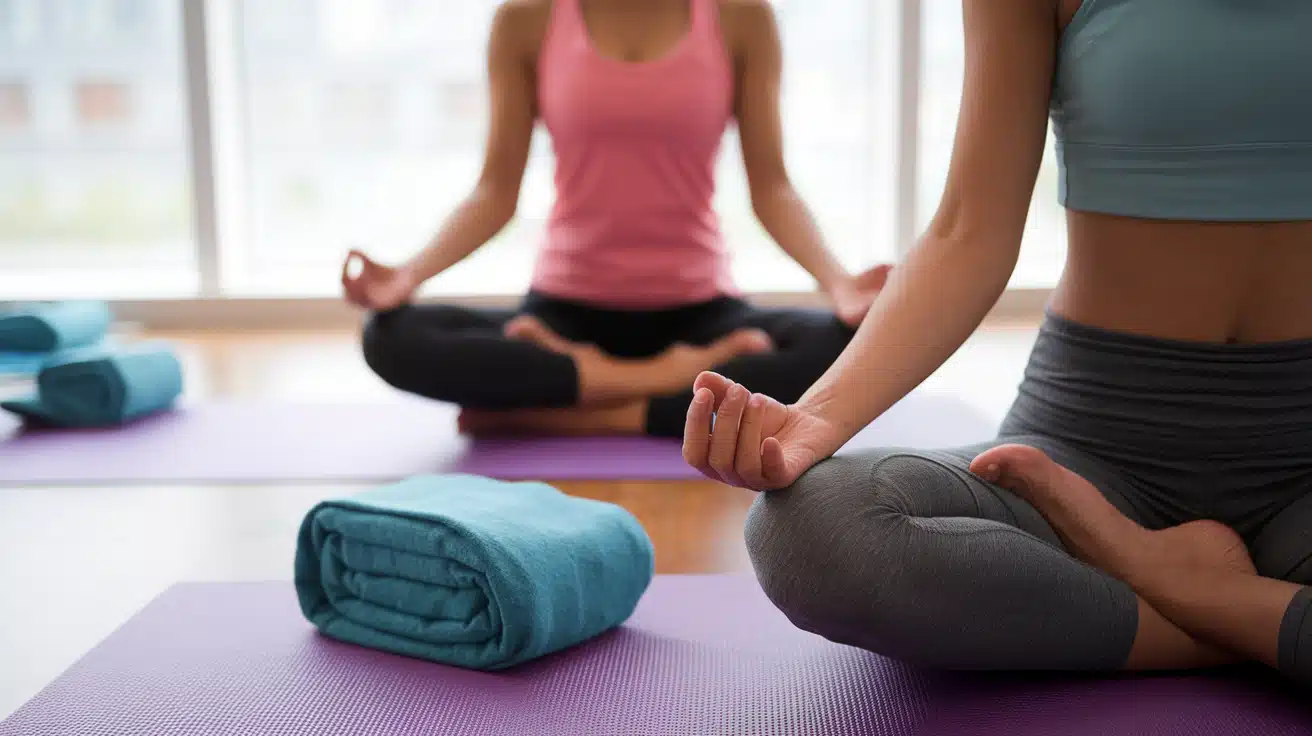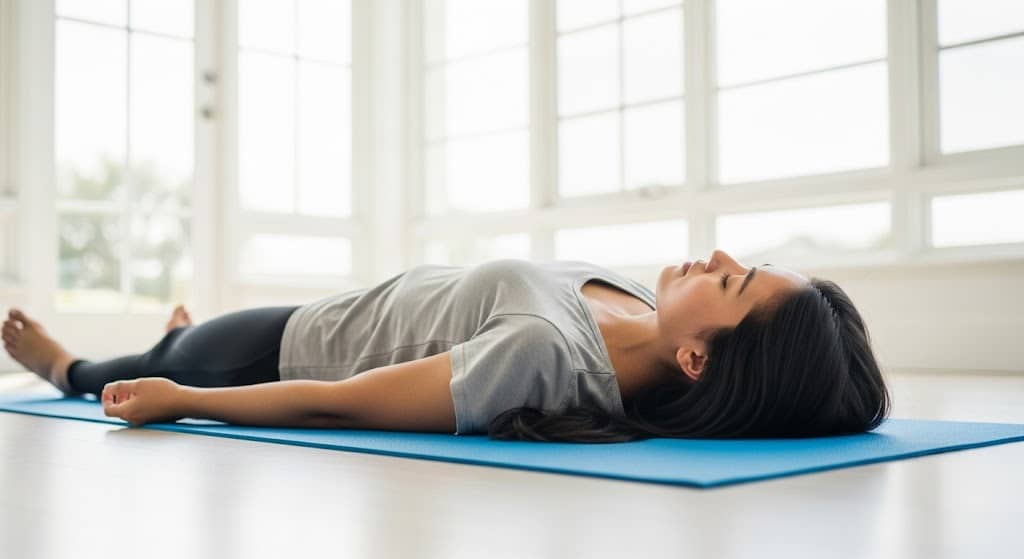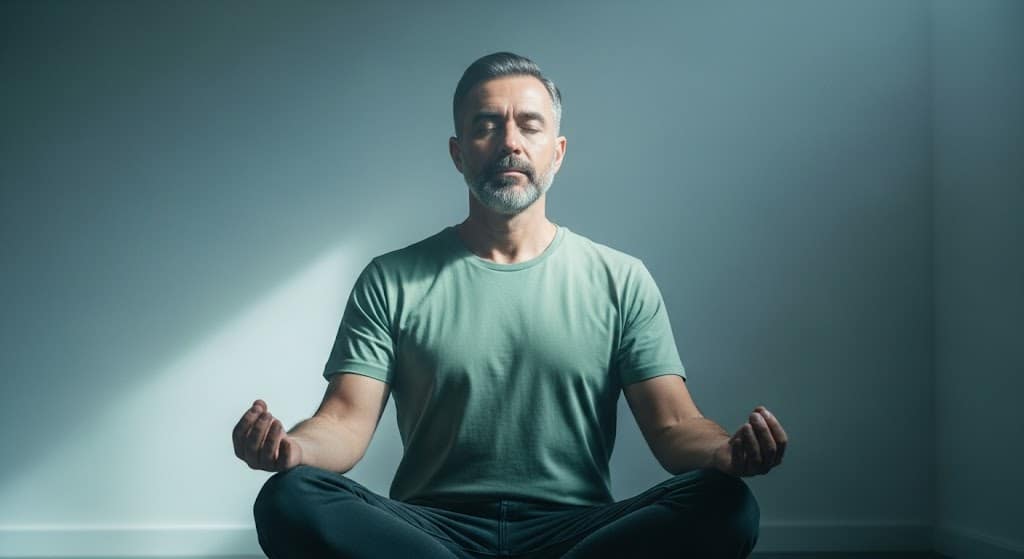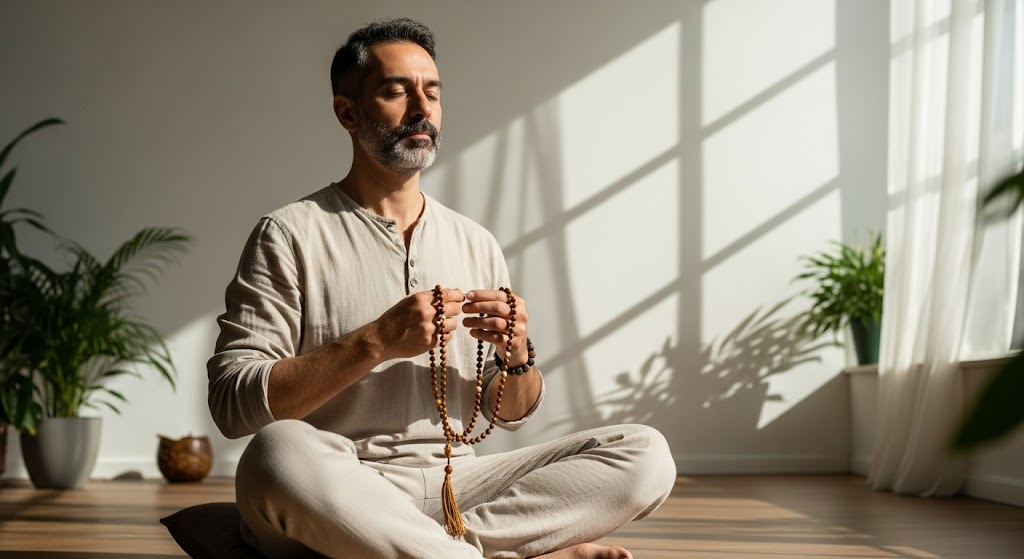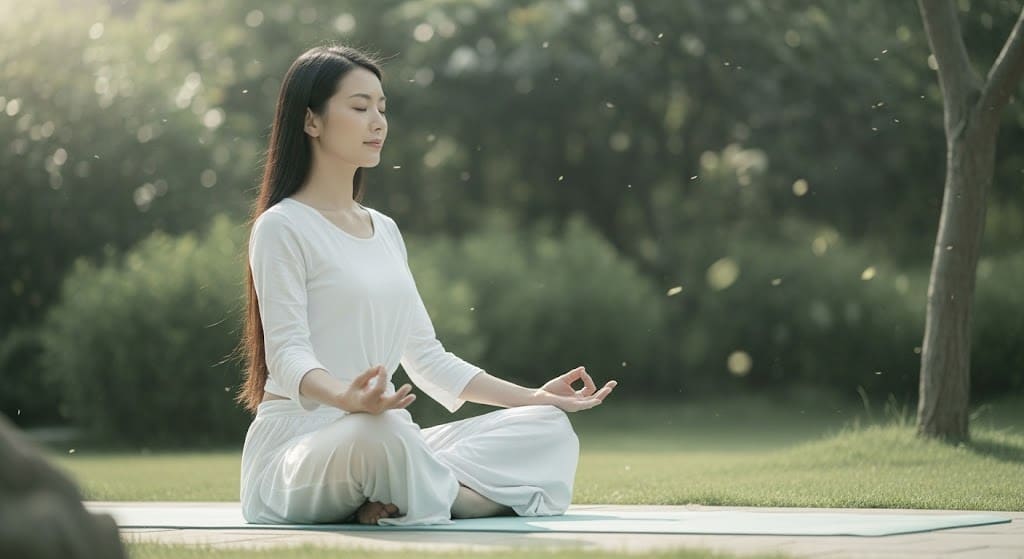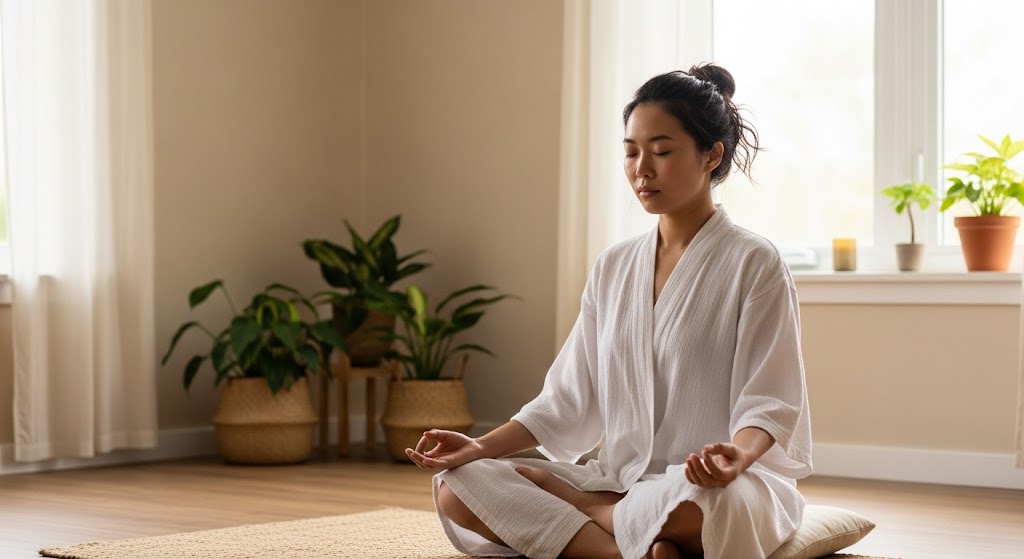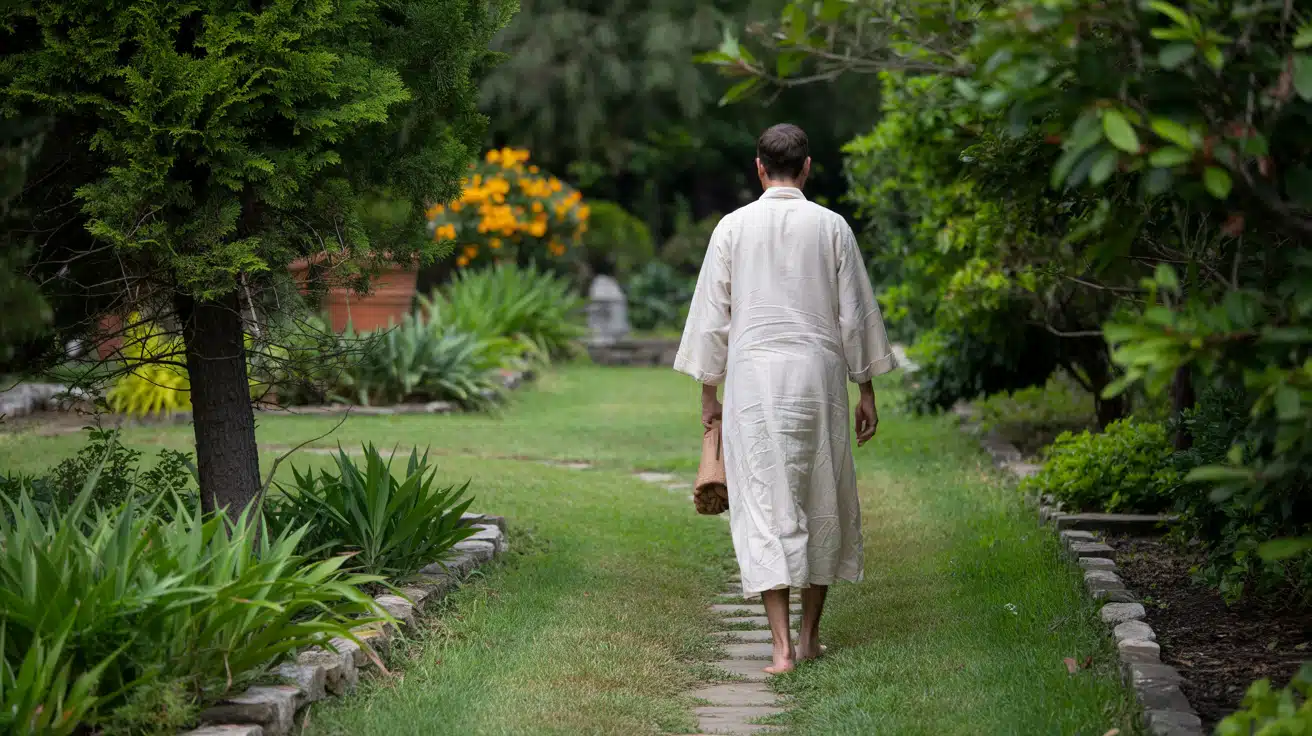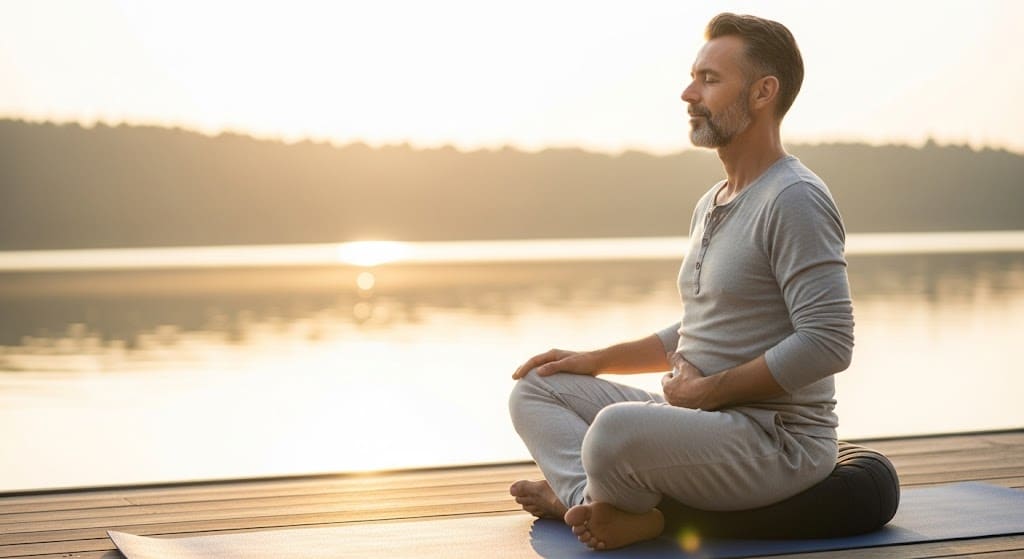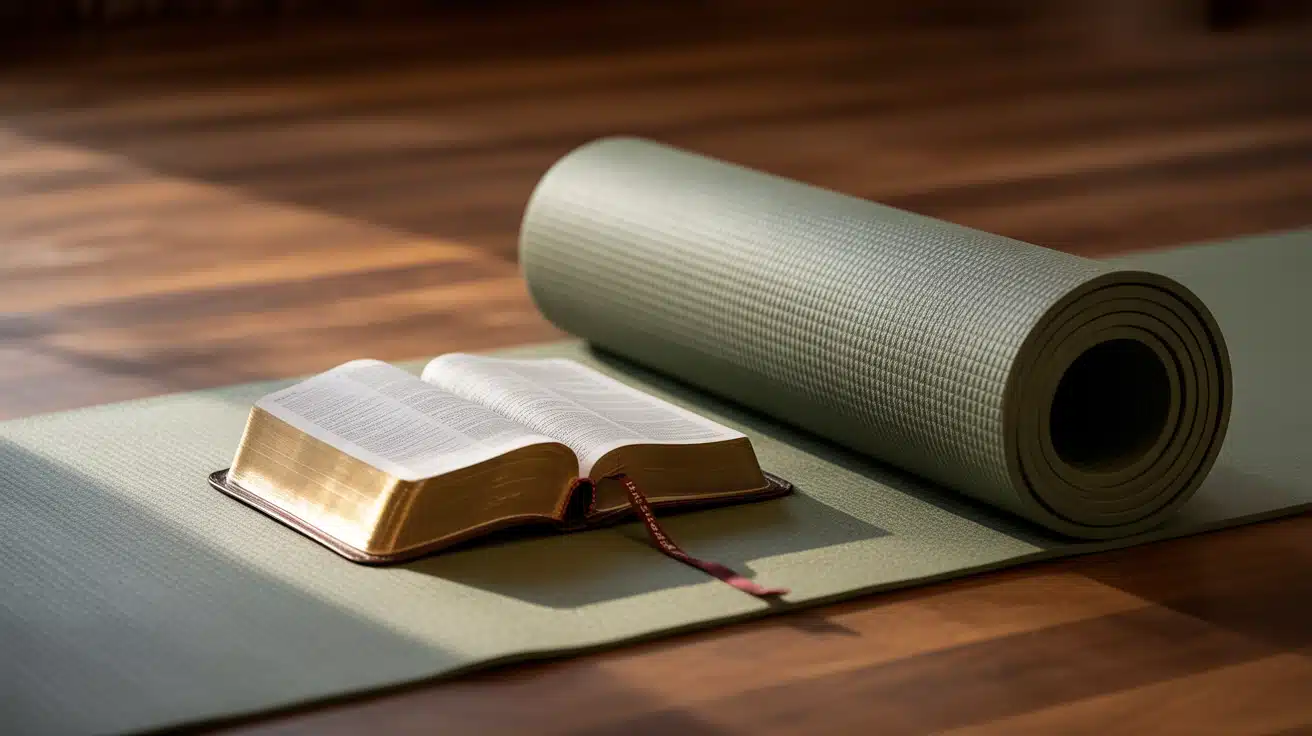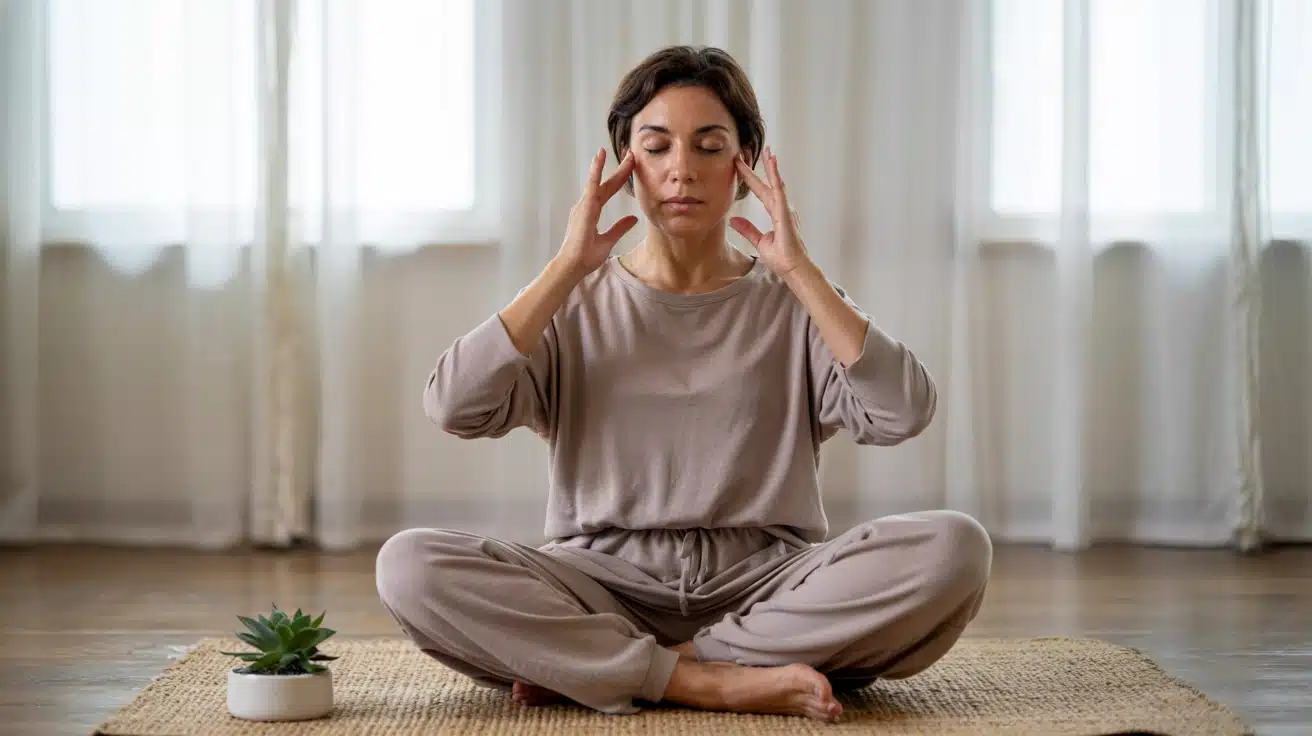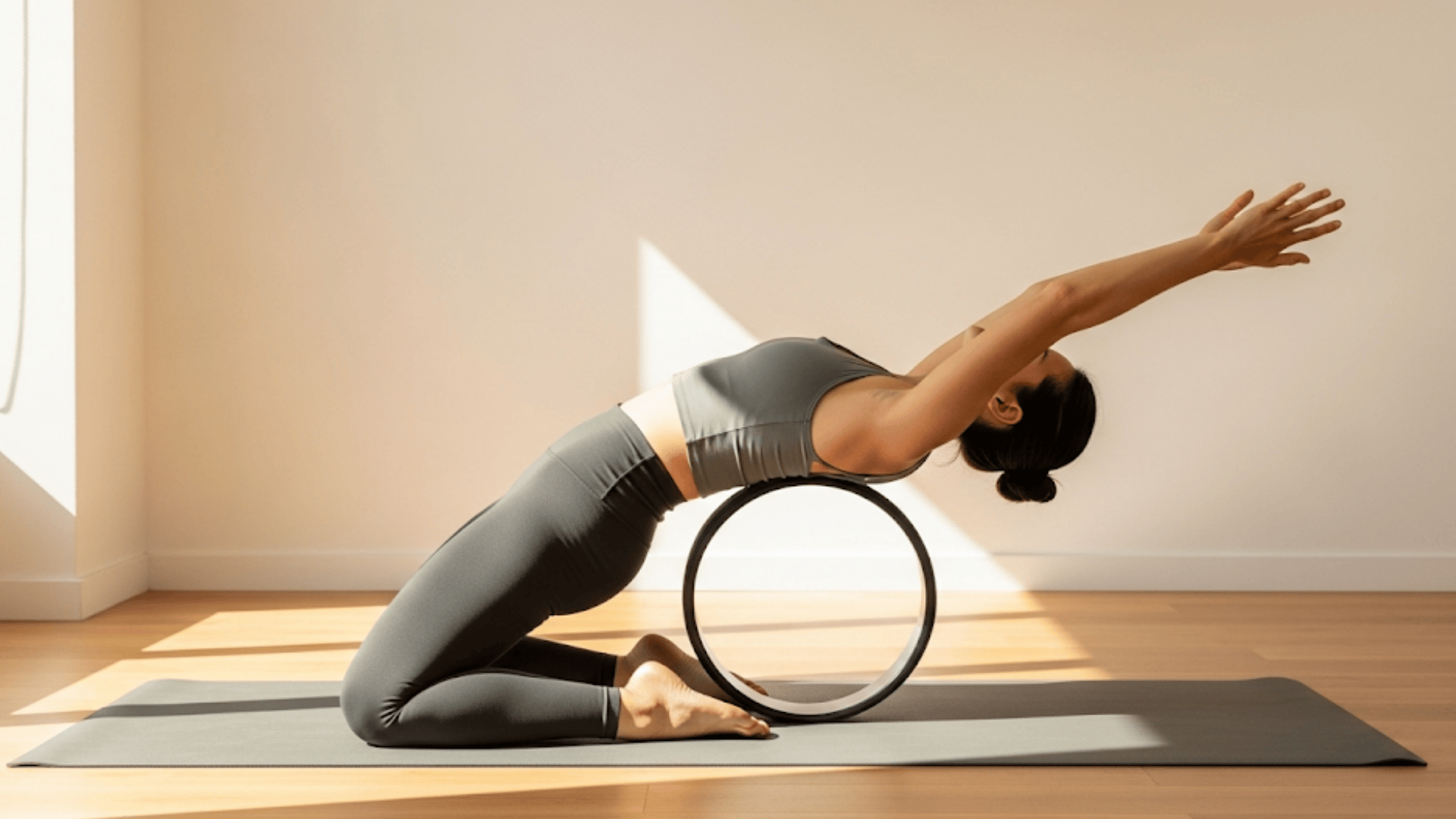Do you feel stressed out and struggle to find real peace in your busy life?
I used to think meditation was just sitting quietly and hoping for the best. But after years of practice, I learned there are specific yoga meditation techniques that work to calm your mind and body.
These proven methods can help you reduce stress, sleep better, and feel more balanced, without needing hours of practice or perfect conditions.
In this guide, I’ll share the most effective yoga meditation techniques that have helped thousands of people find true relaxation. Let me show you exactly how to start your own calming practice today.
What is Meditation?
Meditation is a mental training practice that helps you focus your mind and gain awareness. It involves using specific techniques to concentrate on an object, thought, or activity. This ancient practice brings mental clarity and emotional stability.
During meditation, you learn to observe your thoughts without getting caught up in them. You might focus on your breath, repeat a word or phrase, or simply sit quietly. The goal is to develop a calm and peaceful state of mind.
Regular meditation practice can reduce stress, improve concentration, and boost overall well-being. Anyone can learn this simple yet powerful technique.
What are the 3 Types of Meditation?
Traditionally, meditation can be grouped into three core types:
- Concentration Meditation: focusing on a single object, sound, or thought.
- Mindfulness Meditation: being fully aware of the present moment without judgment.
- Guided Meditation: following a teacher’s voice or visualization for relaxation and clarity.
These three types are important because they offer different pathways to mental peace and cater to various learning styles. Concentration meditation builds focus and mental discipline. Mindfulness meditation develops awareness and reduces stress.
Guided meditation provides structure and support for beginners, making meditation accessible to everyone regardless of experience level.
8 Foundational Yoga Meditation Techniques
These simple yet powerful meditation practices can help you build a strong foundation for your spiritual practice. Each technique offers a different path to inner peace and mental clarity.
1. Body Scan Meditation (10-20 Minutes)
This technique brings awareness to your entire body. Start from the top of your head and slowly move down to your toes. Notice any tension, discomfort, or sensations.
Send thoughts of release and relaxation to tense areas. Use deep breathing to help these intentions reach different parts of your body. This practice helps align your body and mind while relieving stress.
Best Time to Practice: Before bedtime or after long work days.
Benefits: Reduces muscle tension, improves sleep quality, relieves chronic pain
2. Mindfulness Meditation (5-30 Minutes)
Focus on the present moment without judgment. Sit quietly and observe your thoughts as they come and go. Don’t engage with them or try to stop them.
Simply notice them like clouds passing in the sky. This technique helps clear your mind of worry and brings mental clarity.
Who can perform: It’s perfect for beginners who want to learn awareness.
3. Mantra Meditation (10-20 Minutes)
Choose a word or phrase to repeat during your practice. This can be a Sanskrit word like “Om” or your own positive intention.
The repetition helps keep your mind focused and eliminates distracting thoughts. You can say your mantra out loud or silently. The vibrations from certain sounds can bring positive changes and deeper meditation states.
Popular Mantras for Beginners:
- “So Hum” (I am)
- “Om Shanti” (Peace)
- “I am calm and peaceful.”
Pro Tip: Use a mala (108 beads) to count repetitions
4. Candle Gazing (5-15 Minutes)
Light a candle in a dark or dim room. Sit comfortably and stare at the flame for 15-60 seconds without blinking. Then close your eyes for a few seconds between rounds.
This practice improves concentration, boosts energy, and helps with focus. It’s a simple way to train your mind to stay present and alert.
Safety Note: Sit 3-4 feet away from the candle. Stop if you feel eye strain.
What You’ll Experience: You may see the flame’s afterimage when you close your eyes; this is normal.
5. Loving-Kindness Meditation (10-25 Minutes)
Start by sending good thoughts to yourself. Then extend these feelings to loved ones, neutral people, and even difficult people in your life.
Use phrases like “May I be happy” or “May you be peaceful.” This technique builds compassion and helps release negative feelings. It creates a sense of connection with all beings.
The Four Traditional Phrases:
- May you be happy
- May you be healthy
- May you be safe
- May you live with ease
Who to Include: Start with yourself, then a loved one, a neutral person, a difficult person, and finally all beings
6. Focused Attention Meditation (5-20 Minutes)
Choose one object to focus on throughout your practice. This could be your breath, a physical sensation, or an image in your mind.
When your mind wanders, gently bring it back to your chosen focus point. This technique builds concentration skills and mental stability.
Focus Objects for Beginners:
- Breath at the nostrils
- Heartbeat
- A simple visualization (like a blue light)
Building Concentration: Start with 5 minutes and gradually increase
7. Walking Meditation (10-30 Minutes)
Practice mindful walking either outdoors or in your home. Take extremely slow and intentional steps. Focus on the movement of your feet and legs rather than reaching a destination.
This technique is perfect for people who find sitting meditation challenging. It helps calm both body and mind through gentle movement.
Step-by-Step Instructions:
- Walk slower than your normal pace
- Feel your feet touch the ground
- Notice the lifting and placing of each foot
- If outdoors, include awareness of nature sounds
Indoor Practice: A 10-foot path is enough for effective walking meditation
8. Breath Awareness (5-15 Minutes)
Focus entirely on your breathing pattern. Try Ujjayi breathing by breathing through your nose while engaging your throat muscles.
This creates a gentle sound and helps regulate your heart rate. Breath awareness is the foundation of most meditation practices. It brings you into the present moment and calms your nervous system.
How to Practice Ujjayi:
- Breathe in and out through your nose
- Slightly constrict your throat (like fogging a mirror)
- Create a soft “ocean” sound
- Keep your mouth closed throughout
Physical Benefits: Lowers blood pressure, reduces stress hormones, improves lung capacity
Choose one technique that feels right for you. Practice it regularly for the best results. Start with just 5-10 minutes daily. You can combine different techniques as you become more comfortable. The key is consistent practice rather than perfect execution.
How to Choose the Right Meditation for You?
Finding the perfect meditation technique is personal and depends on your lifestyle and goals.
Beginners should start with mindfulness meditation or breath awareness since they’re simple and require no special equipment. If you have a busy mind, try mantra meditation or candle gazing for better focus.
For emotional healing, choose loving-kindness meditation, while a body scan works well for physical tension. Don’t aim for perfection,
Tips for Building a Consistent Practice
- Start small and be realistic: Begin with just 5-10 minutes daily rather than attempting long sessions that feel overwhelming.
- Choose the same time each day: Morning or evening works well, as consistency helps build the habit naturally.
- Create a dedicated space: Find a quiet spot where you won’t be interrupted and can sit comfortably.
- Don’t judge your progress – Accept that your mind will wander and gently guide it back to your focus point without criticism.
- Track your practice: Keep a simple log or use an app to stay motivated and see your progress over time.
Conclusion
These eight yoga meditation techniques offer real solutions for anyone seeking relaxation and inner peace.
Choose body scan meditation for physical tension or loving-kindness meditation for emotional healing. Each method offers a path to reduce stress and enhance your overall well-being.
The beauty of these practices lies in their simplicity; you don’t need special equipment or years of training to see results. Begin daily, using the technique that feels most comfortable to you.
Remember, meditation is a skill that develops over time. Be patient with yourself as you build this healthy habit. Your future self will thank you for taking these small steps toward a calmer, more balanced life.
What’s your biggest challenge with stress? Share your thoughts in the comments below. I’d love to help you find the perfect meditation technique for your needs.

